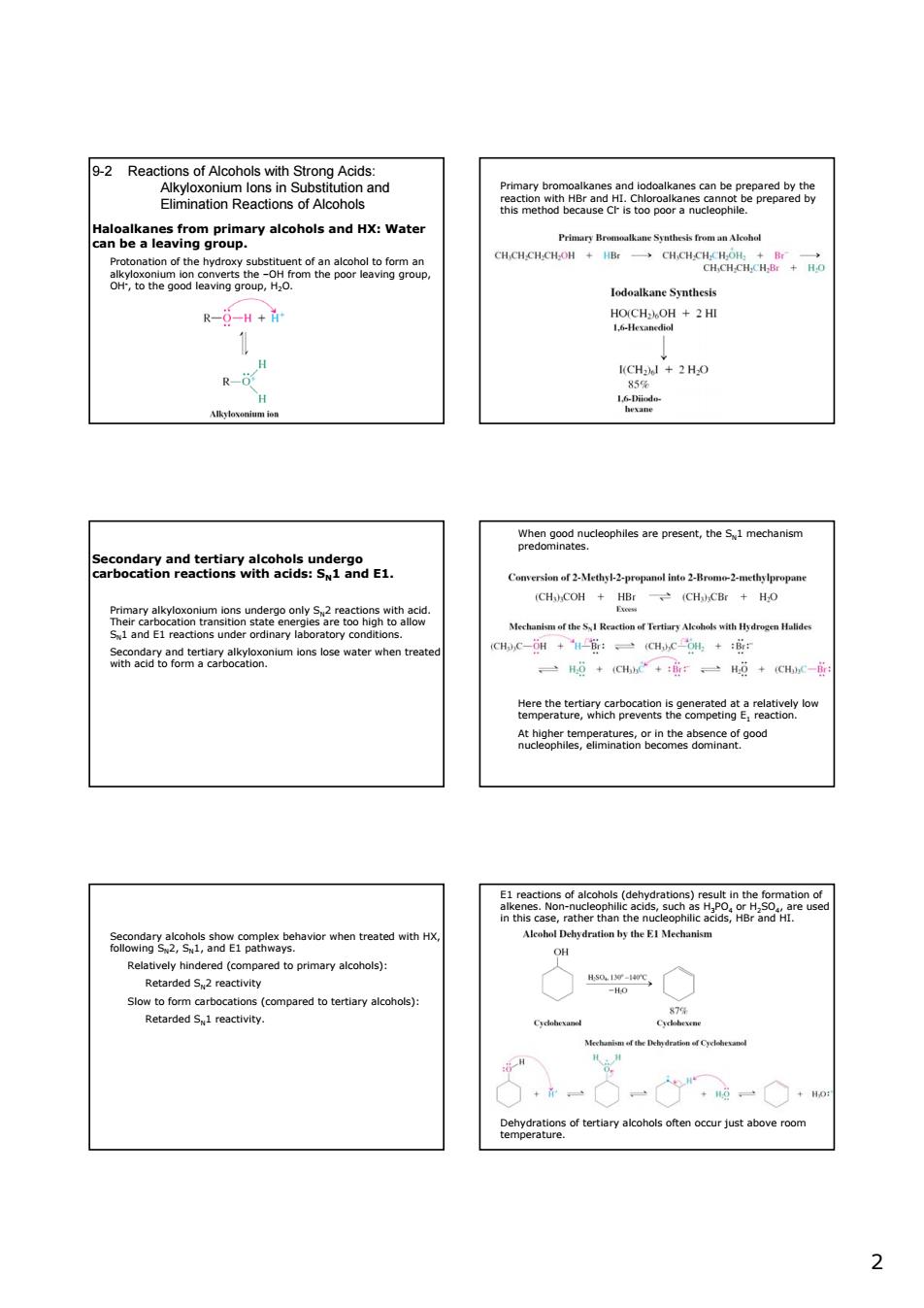正在加载图片...

9-2 Reactior of Alcohols th Ste and &Rea8amoa R-H+ R-6 Esroeianrdai6sahna8asggaEa. Come l into 2-Bro m2-mcth 、一6+4aH2◆G、一0+H- temeheeenmCartbeatne2eaemeeagtersceo 品 d (c aretopmary): mpared to tertiary alcohols): Retarded S1 reactivity. Batwtyatahasotmoeamrboeoem 22 Reactions of Alcohols with Strong Acids: Alkyloxonium Ions in Substitution and Elimination Reactions of Alcohols 9-2 Haloalkanes from primary alcohols and HX: Water can be a leaving group. Protonation of the hydroxy substituent of an alcohol to form an alkyloxonium ion converts the –OH from the poor leaving group, OH- , to the good leaving group, H2O. Primary bromoalkanes and iodoalkanes can be prepared by the reaction with HBr and HI. Chloroalkanes cannot be prepared by this method because Cl- is too poor a nucleophile. Secondary and tertiary alcohols undergo carbocation reactions with acids: SN1 and E1. Primary alkyloxonium ions undergo only SN2 reactions with acid. Their carbocation transition state energies are too high to allow SN1 and E1 reactions under ordinary laboratory conditions. Secondary and tertiary alkyloxonium ions lose water when treated with acid to form a carbocation. When good nucleophiles are present, the SN1 mechanism predominates. Here the tertiary carbocation is generated at a relatively low temperature, which prevents the competing E1 reaction. At higher temperatures, or in the absence of good nucleophiles, elimination becomes dominant. Secondary alcohols show complex behavior when treated with HX, following SN2, SN1, and E1 pathways. Relatively hindered (compared to primary alcohols): Retarded SN2 reactivity Slow to form carbocations (compared to tertiary alcohols): Retarded SN1 reactivity. E1 reactions of alcohols (dehydrations) result in the formation of alkenes. Non-nucleophilic acids, such as H3PO4 or H2SO4, are used in this case, rather than the nucleophilic acids, HBr and HI. Dehydrations of tertiary alcohols often occur just above room temperature